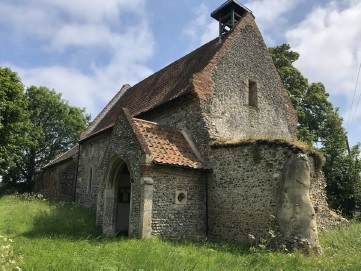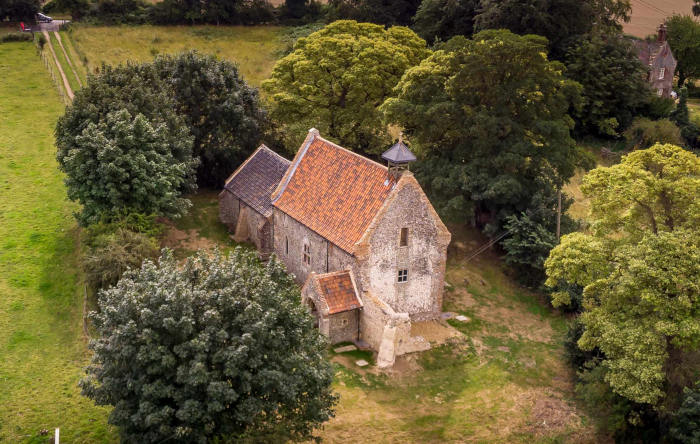Facts about the church
Inside Doors. The north door (main entrance) and south door (opposite) are Norman in style and probably 12th century. They are among the oldest features of the church. Bell. The bell, suspended outside and above the west end of the nave, was bought in 1900, when extensive repairs to the church were completed. Font. The plain octagonal font, just inside the north door, is 14th century. It is still used. Wall painting. There are traces of a wall painting, possibly
The Parish
All Saints’ is a Chapel of Ease in the Parish of South Creake with Waterden and is part of the Creakes Benefice. At different times over the centuries, however, Waterden parish has either stood alone or been associated with others such as Egmere and Holkham. Graves ranging from the medieval to 21st century burials demonstrate a continuity of purpose and devotion. The earliest name we have for a rector is from about 1260. The last rector left or died in the
The Vanished Village
All Saints’ was an essential part of the medieval village. The centre of the village was to the north-east of the church, approximately where the farm is today. A track, part of which is still a public footpath, linked the church and the village, running along the far side of the small stream which is the western boundary of the churchyard. There is a footbridge across the stream, accessible in the north-west corner of the churchyard. This was probably where villagers
The Building
All Saints’ is Grade II* listed. It is built mainly from brick, flint and rubble. From the outside, it has three main visible elements: the chancel, the nave, and ruins at the west end. Overall, the relative proportions of the chancel and nave are a bit unusual, the chancel being wider than the nave and a little longer than normal. The ruins at the west end were thought to be the remains of a fallen tower. A more convincing explanation is
Foreword
My young and expanding family and I were lucky enough to live at Waterden Farmhouse for nearly a decade from December 1998. Back then, as now, All Saints’ Church only had one service a month during the summer (the church has no electricity) and its ever-popular Christmas Eve candlelit service, with some worshippers crammed into the old box pews and the rest squeezed into the rear of the church. We never drove to church and the walk became, for us, part



